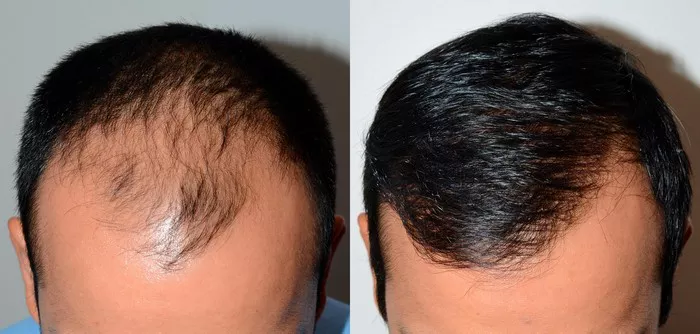For those considering a hair transplant, concerns about potential discomfort during the procedure are not uncommon. An essential aspect of the process is the administration of anesthesia, which plays a pivotal role in ensuring a pain-free and comfortable experience. In this article, we delve into the nuances of hair transplant anesthesia, addressing the common question: How painful is it?
The Foundation of Comfort: Local Anesthesia in Hair Transplants
Before delving into the pain level, it’s crucial to understand the type of anesthesia used in hair transplant procedures. Local anesthesia is the primary choice for hair transplants, and it is administered directly to the treatment area. Unlike general anesthesia, which induces a state of unconsciousness, local anesthesia numbs only the specific region where the surgery takes place. This approach allows patients to remain awake and aware during the procedure while minimizing discomfort.
The Initial Pinch: Discomfort During Anesthesia Administration
The first step of the hair transplant process involves administering local anesthesia to the donor and recipient areas. Patients often describe this as a series of minor pinpricks or stings. While the initial pinch might cause a brief moment of discomfort, it is typically well-tolerated. Moreover, many practitioners use a vibrating device or cooling spray to distract from the sensation, making the process more comfortable for patients.
The Gradual Numbing Effect: Easing into Anesthesia
As the local anesthesia takes effect, patients experience a gradual numbing sensation in the treated areas. The purpose of this process is to ensure that the patient remains comfortable throughout the procedure. The numbing effect extends to the skin and deeper tissues, allowing the surgeon to perform the necessary graft extraction and implantation without causing pain. Patients typically reach a state where they feel minimal to no sensation in the treated areas.
Patient Communication: A Vital Element of Comfort
During the administration of anesthesia, communication between the patient and the surgical team is crucial. Patients are encouraged to communicate any discomfort or sensations they may be experiencing, allowing the surgical team to adjust the anesthesia as needed. Open and transparent communication helps create a collaborative and supportive environment, ensuring that the patient’s comfort remains a top priority throughout the procedure.
The Main Event: Pain During Graft Extraction and Implantation
Once the anesthesia takes effect, the main phases of the hair transplant procedure commence: graft extraction and implantation. Patients often express surprise at the lack of pain during these critical stages. The numbing effect of the local anesthesia ensures that the donor and recipient areas remain pain-free throughout the process. Patients may feel a sensation of pressure or movement but should not experience pain.
Post-Anesthesia Comfort: Managing Discomfort After the Procedure
As the hair transplant procedure concludes, patients may experience some discomfort once the anesthesia begins to wear off. This is a normal part of the recovery process, and it is typically managed with oral pain medications prescribed by the surgeon. It’s essential for patients to follow post-operative care instructions diligently to minimize any potential discomfort and promote a smooth recovery.
Individual Variations: Factors Influencing Pain Perception
While the majority of patients report minimal pain or discomfort during a hair transplant, individual pain perception can vary. Factors such as pain tolerance, anxiety levels, and individual responses to anesthesia may influence the overall experience. A thorough discussion with the surgeon about any concerns or apprehensions can help tailor the anesthesia approach to the patient’s needs, enhancing their overall comfort.
Technological Advancements: Improving the Anesthesia Experience
Advancements in technology and anesthesia techniques contribute to the continual improvement of the overall hair transplant experience. Many clinics incorporate state-of-the-art equipment and methods to enhance patient comfort during anesthesia administration. These advancements aim to make the process more efficient, with a focus on minimizing any potential discomfort for the patient.
The Role of the Surgeon: Expertise in Anesthesia Administration
The expertise of the surgeon in administering local anesthesia significantly influences the patient’s experience. A skilled and experienced surgeon understands the nuances of pain management, ensuring that the anesthesia is administered effectively and with the patient’s comfort in mind. Choosing a qualified and reputable surgeon is a key factor in ensuring a positive and pain-free hair transplant experience.
See Also: [Revealed!] Why is My Hair Transplant Patchy After 1 Year?
Conclusion: A Comfortable Journey Towards Hair Restoration
The pain level associated with hair transplant anesthesia is generally minimal, thanks to the use of local anesthesia and advancements in pain management techniques. Patients can expect a brief moment of discomfort during the initial anesthesia administration, followed by a gradual numbing sensation that ensures pain-free graft extraction and implantation. Effective communication with the surgical team, individual variations in pain perception, and the surgeon’s expertise all contribute to creating a comfortable and positive experience for those undergoing a hair transplant. As technology continues to advance, the future holds even greater promise for improving the overall comfort and satisfaction of individuals seeking hair restoration through transplantation.


